Visit the life and work of the artist at the Museo Casa Oswaldo Guayasamín in Old Havana, Cuba. [ENG][ESP]
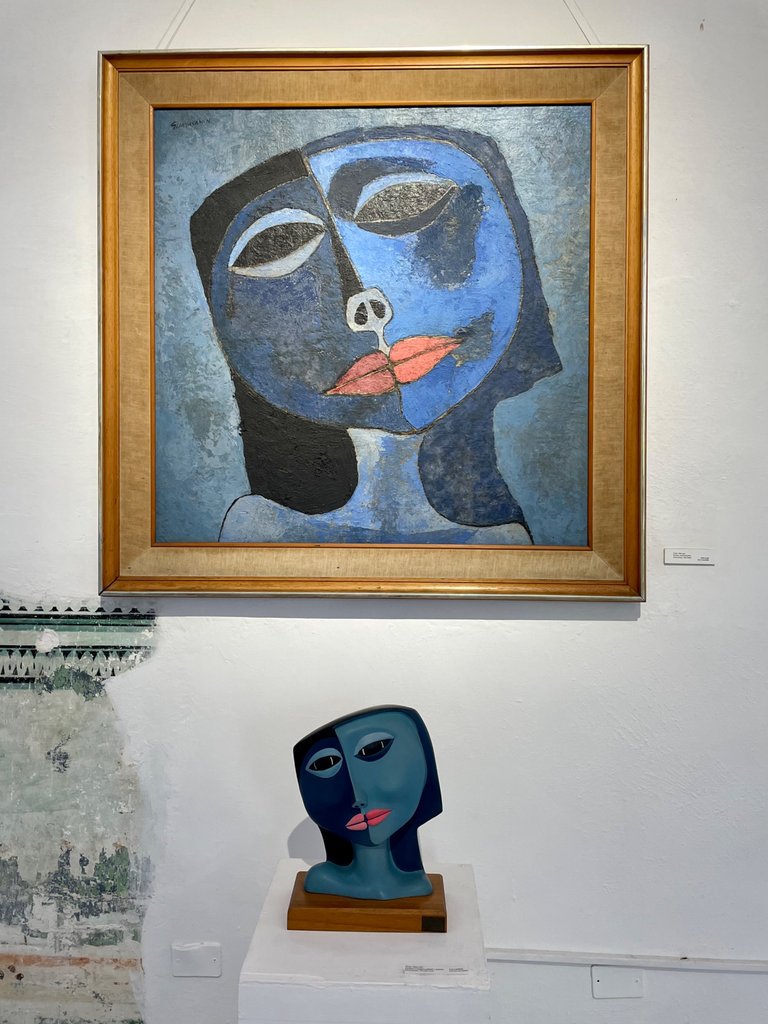
Did you know? In my country, in the city of Old Havana, there is an 18th century house that was restored by the Ecuadorian artist "Oswaldo Guayasamin" with the help of the Office of the Historian. It was inaugurated on January 18, 1992 and has great patrimonial and cultural values. Interesting, isn't it? Come with me.
The architectural museum house has three rooms with permanent exhibitions to commemorate the memory of this well-known painter of Ibero-America, who also made several paintings for Commander Fidel Castro. There are also personal objects of the creator and original works donated to the Cuban nation, as well as pieces of Latin American popular art and objects dating back to the 19th century.
The architectural museum house has three rooms with permanent exhibitions to commemorate the memory of this well-known painter of Ibero-America, who also made several paintings for Commander Fidel Castro. There are also personal objects of the creator and original works donated to the Cuban nation, as well as pieces of Latin American popular art and objects dating back to the 19th century.
¿Sabías qué? En mi país, en la ciudad de la Habana Vieja, se encuentra una casa del siglo XVIII que fue restaurada por el propio artista ecuatoriano "Oswaldo Guayasamín" con la ayuda de la Oficina del Historiador. Pues fue inaugurada el 18 de enero de 1992 y posee grandes valores patrimoniales y culturales. Interesante, ¿verdad? Acompáñame.
La casa museo arquitectónica dispone de tres salas con exposiciones permanentes para conmemorar la memoria de este conocido pintor de Iberoamérica, que también realizó varios cuadros al comandante Fidel Castro. Se presentan también objetos personales del creador y obras originales donadas a la nación cubana, además de apreciar piezas del arte popular latinoamericano y objetos que datan del siglo XIX.
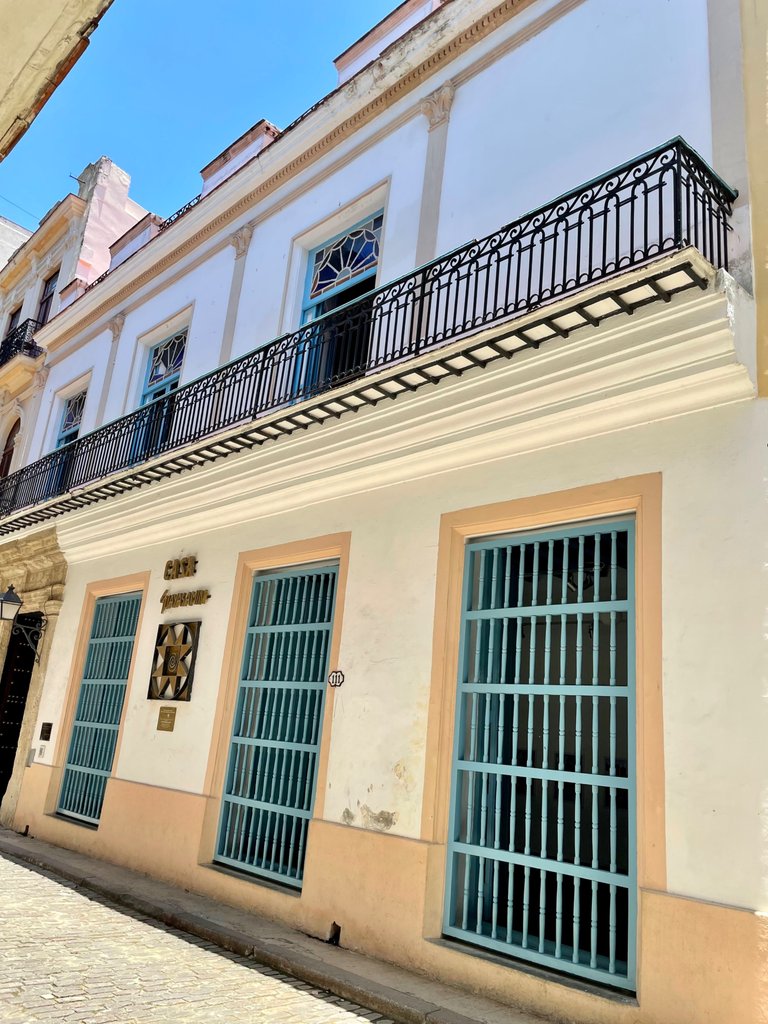
Who was Oswaldo Guayasamín?
Oswaldo Aparicio Guayasamín Calero, born July 6, 1919, was an Ecuadorian sculptor, painter, draftsman and muralist. His authentic work, contentious and from the depths of the human being, led him to show cruelty, injustice, pain, love and tenderness, in an original way and that impacts for its deep humanist character.
He came from a humble family, being the eldest of 10 siblings. His father was of indigenous descent and his mother was of mixed race. He worked as a tractor driver and later as a chauffeur. But it was painting that conquered him as a child. According to the biography collected by the Capilla del Hombre in Quito, the artist used mother's milk to dissolve the watercolor tablets. This was given by his mother, food for his newborn brother. In 1933 he entered the School of Fine Arts in Quito, where he excelled as a student and obtained his degree as a painter and sculptor in 1940. His exhibitions and works travel around the world in countries such as Cuba, Venezuela, Brazil, Mexico, Peru, Chile, Argentina, United States, Uruguay, Spain, China and other regions. Link 🔎
Oswaldo Aparicio Guayasamín Calero, born July 6, 1919, was an Ecuadorian sculptor, painter, draftsman and muralist. His authentic work, contentious and from the depths of the human being, led him to show cruelty, injustice, pain, love and tenderness, in an original way and that impacts for its deep humanist character.
He came from a humble family, being the eldest of 10 siblings. His father was of indigenous descent and his mother was of mixed race. He worked as a tractor driver and later as a chauffeur. But it was painting that conquered him as a child. According to the biography collected by the Capilla del Hombre in Quito, the artist used mother's milk to dissolve the watercolor tablets. This was given by his mother, food for his newborn brother. In 1933 he entered the School of Fine Arts in Quito, where he excelled as a student and obtained his degree as a painter and sculptor in 1940. His exhibitions and works travel around the world in countries such as Cuba, Venezuela, Brazil, Mexico, Peru, Chile, Argentina, United States, Uruguay, Spain, China and other regions. Link 🔎
¿Quién fue Oswaldo Guayasamín?
Oswaldo Aparicio Guayasamín Calero nacido el 6 de julio de 1919 fue escultor, pintor, dibujante y muralista ecuatoriano. Su obra auténtica, contestataria y desde lo profundo del ser humano, lo llevó a mostrar la crueldad, la injusticia, el dolor, el amor y la ternura, de una manera original y que impacta por su profundo carácter humanista.
Provino de una familia humilde, siendo el mayor de 10 hermanos. Su padre fue de ascendencia indígena y su madre mestiza. Trabajó como tractorista y luego como chofer. Pero fue la pintura la que lo conquistó desde niño. Según la biografía recogida por la Capilla del Hombre en Quito, el artista utilizaba leche materna para disolver las pastillas de acuarela. Esta era cedida por su madre, alimento de su hermano recién nacido. En 1933 logra entrar a la Escuela de Bellas Artes de Quito, donde se destaca como estudiante y obtiene su título de pintor y escultor en 1940. Sus exposiciones y obras recorren el mundo en países como Cuba, Venezuela, Brasil, Mexico, Peru, Chile, Argentina, Estados Unidos, Uruguay, España, China entre otras regiones. Link 🔎
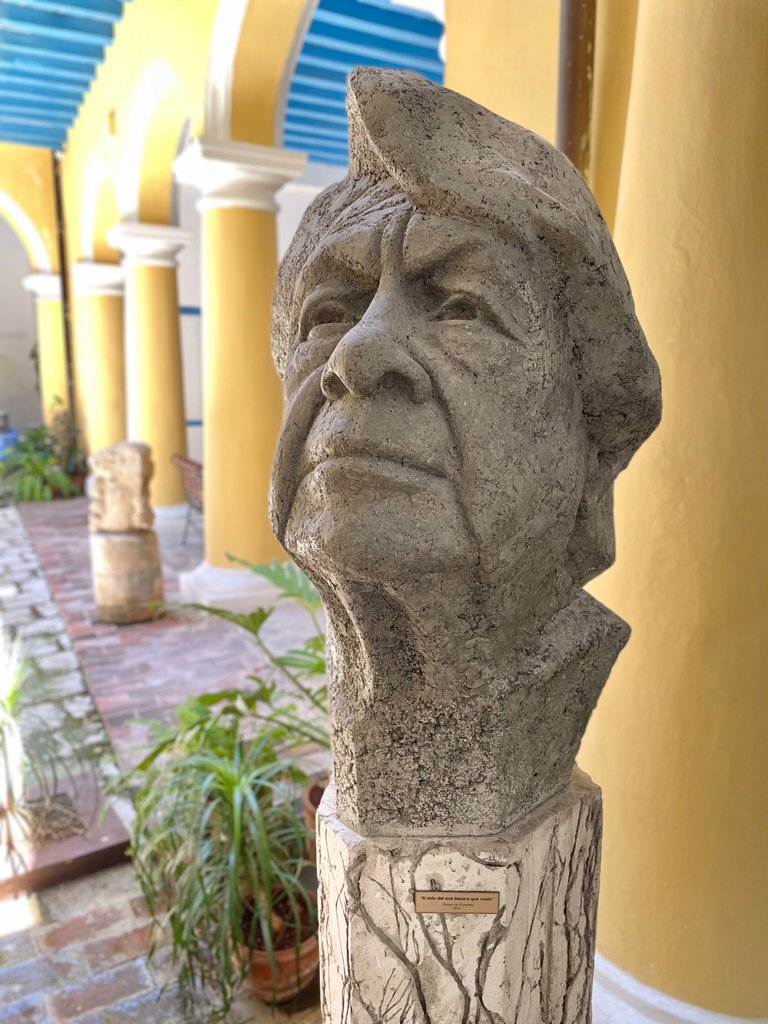
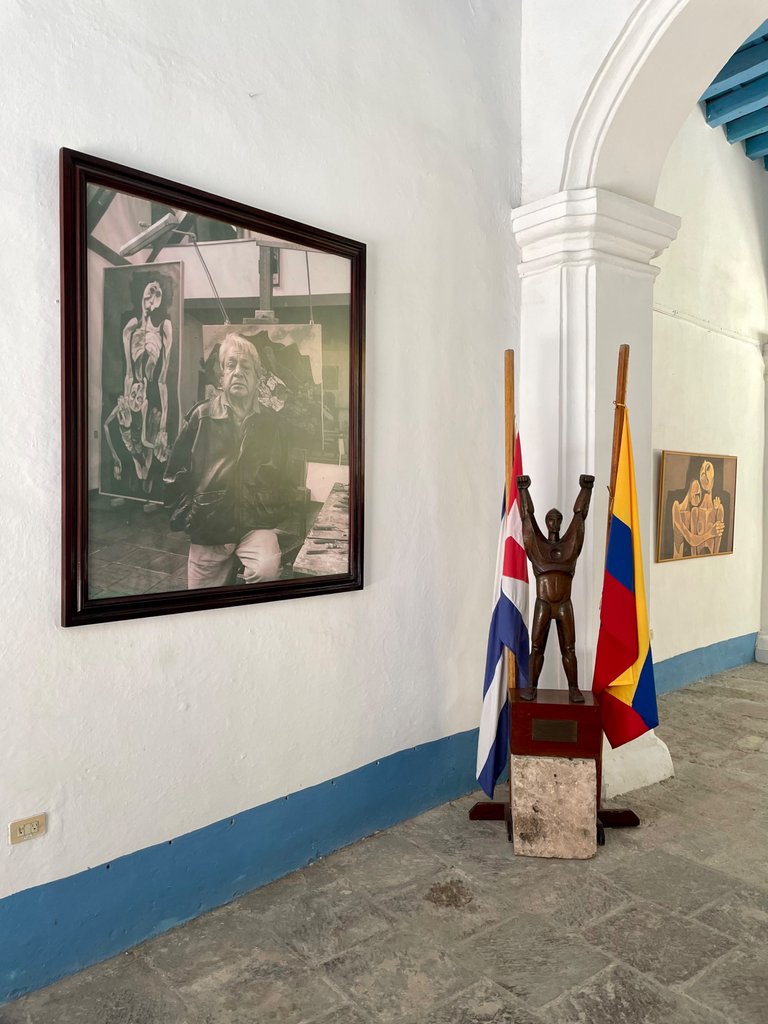
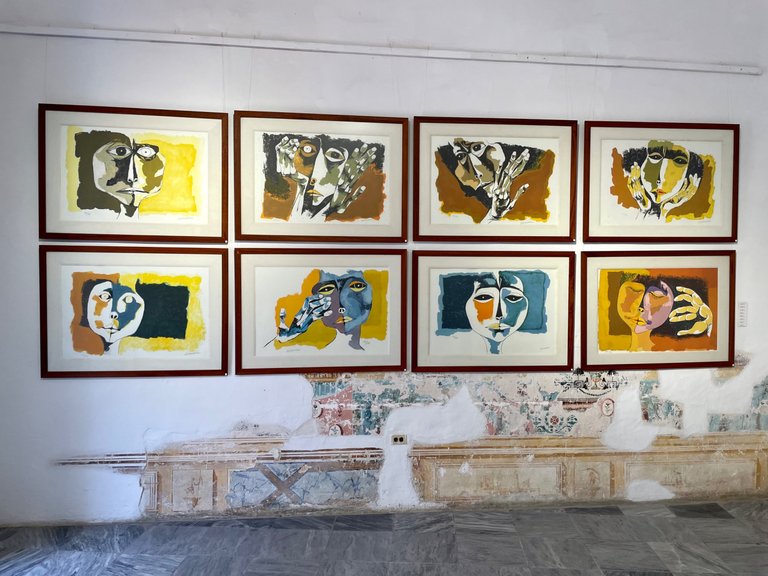
Upon entering the room there is a statue created by Cuban artist Oscar Luis González in 2014 and several paintings on official canvases painted by Guayasamín, donated to the place for the enjoyment of our people.
The mansion was rebuilt, with transformations in the walls, ceiling and stairs with different layers of colors, leaving original parts of allegories of the colonial period. Currently well preserved.
The mansion was rebuilt, with transformations in the walls, ceiling and stairs with different layers of colors, leaving original parts of allegories of the colonial period. Currently well preserved.
Al entrar a la sala se encuentra una estatua creada por el artista cubano Oscar Luis González en 2014 y varios cuadros en lienzos oficiales pintados por Guayasamín, donados al lugar para el disfrute de nuestro pueblo.
La casona fue reconstruida, con transformaciones en las paredes, techo y escaleras con diferentes capas de colores, dejando partes originales de alegorías del período colonial. Actualmente bien conservada.
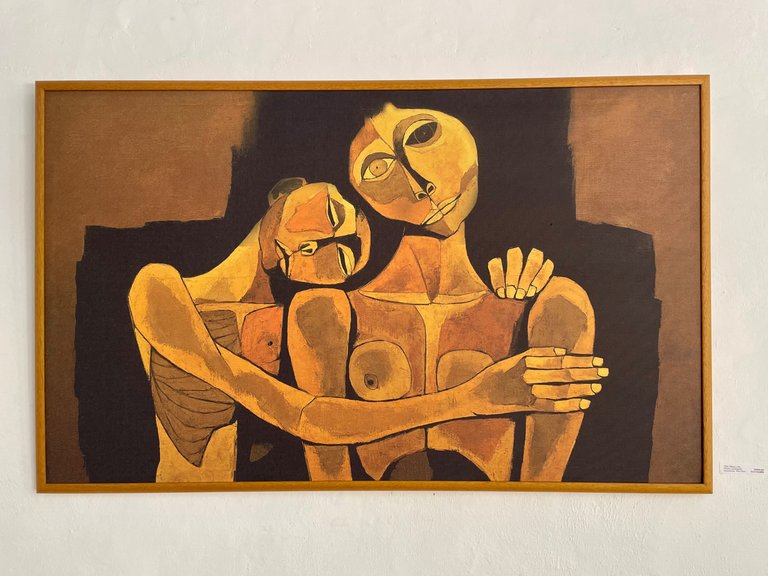
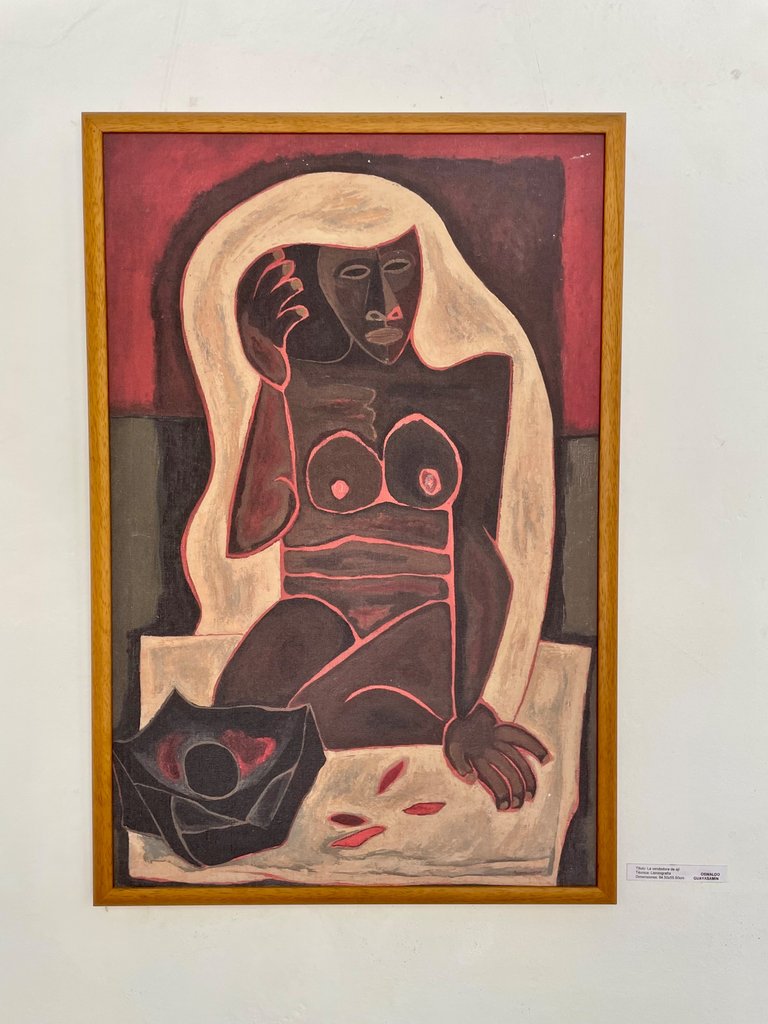
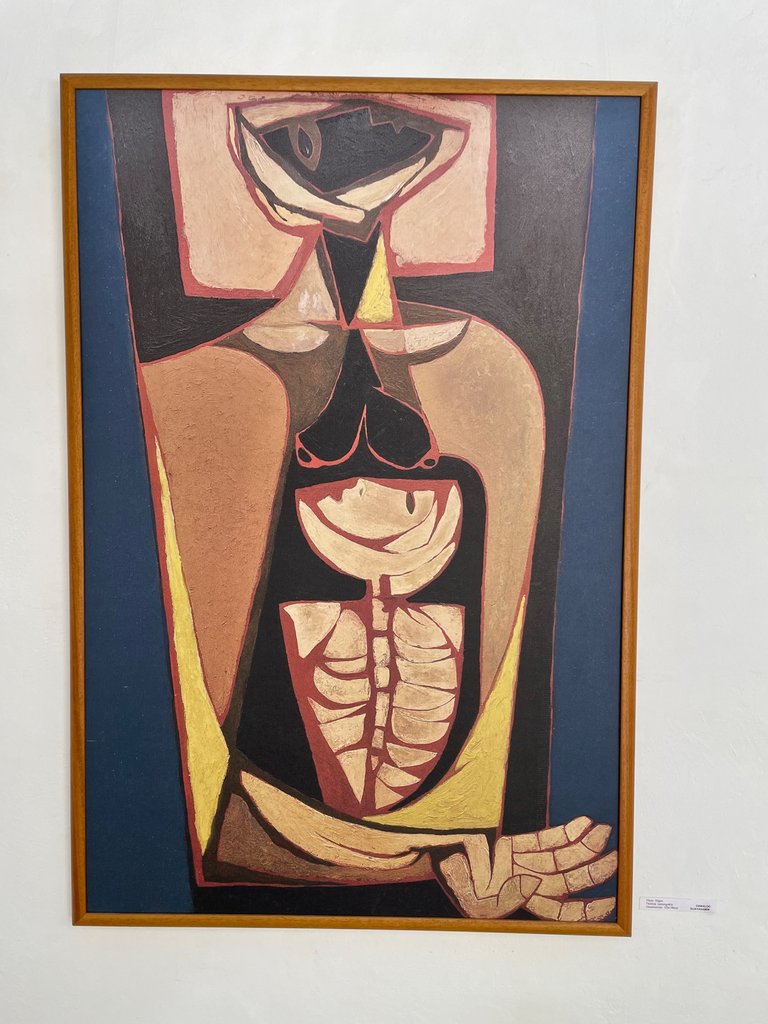


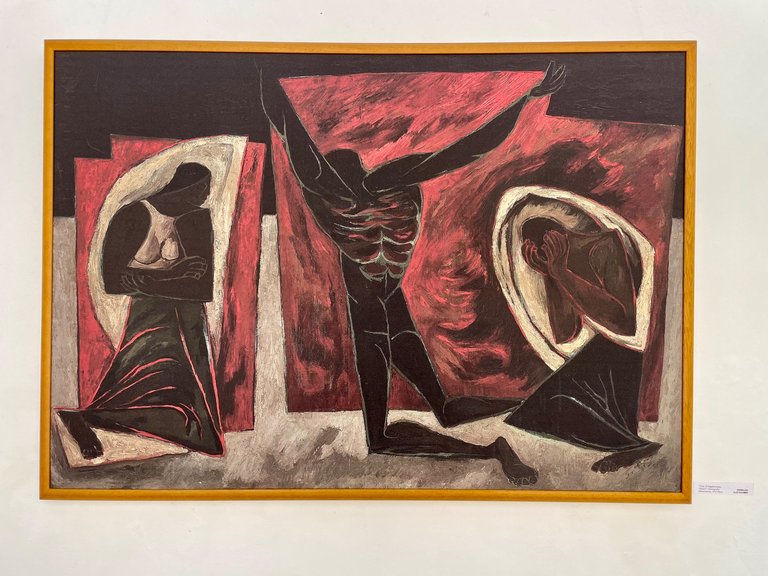

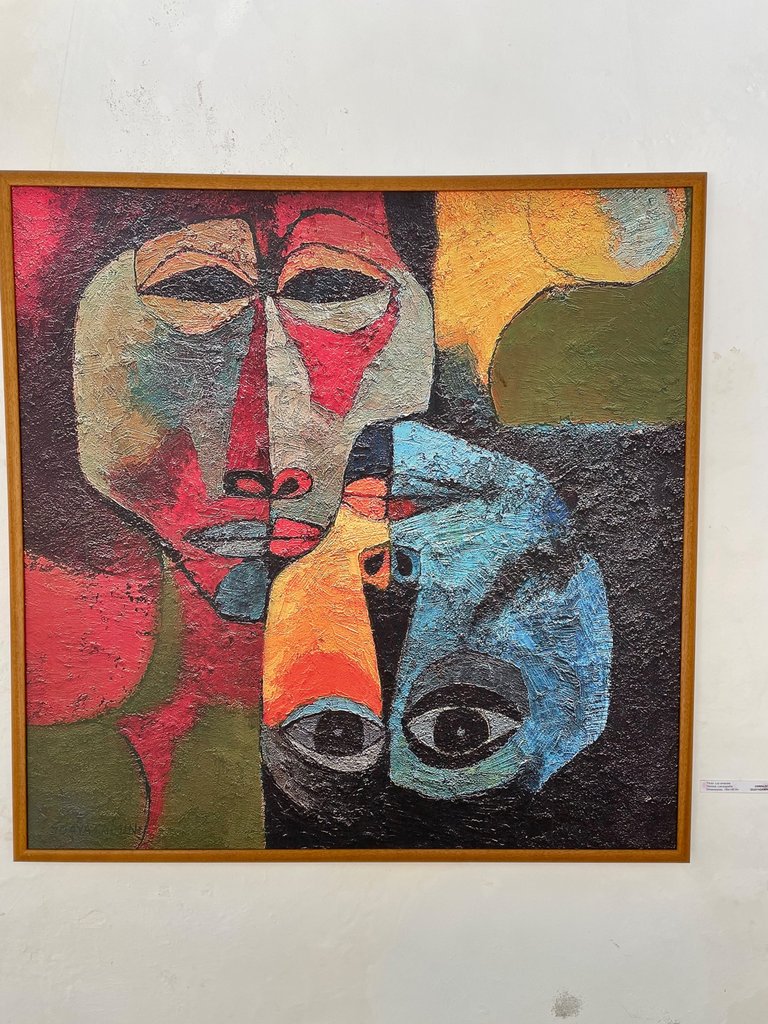
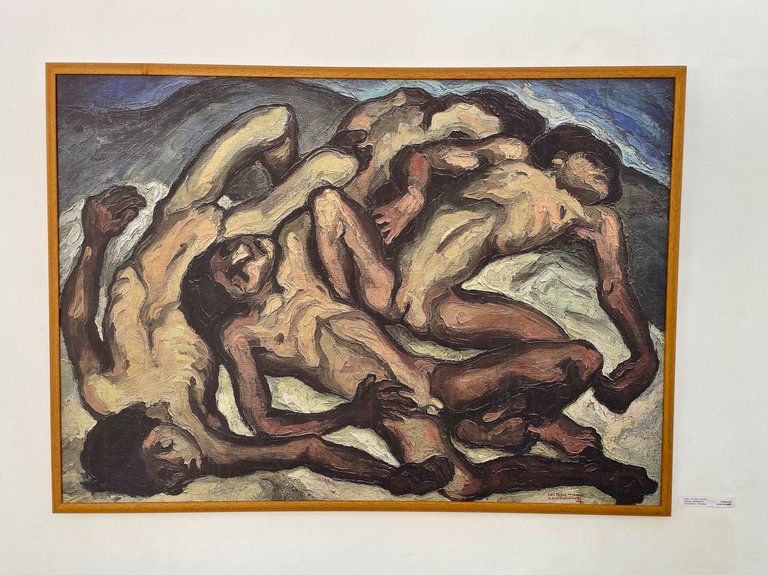
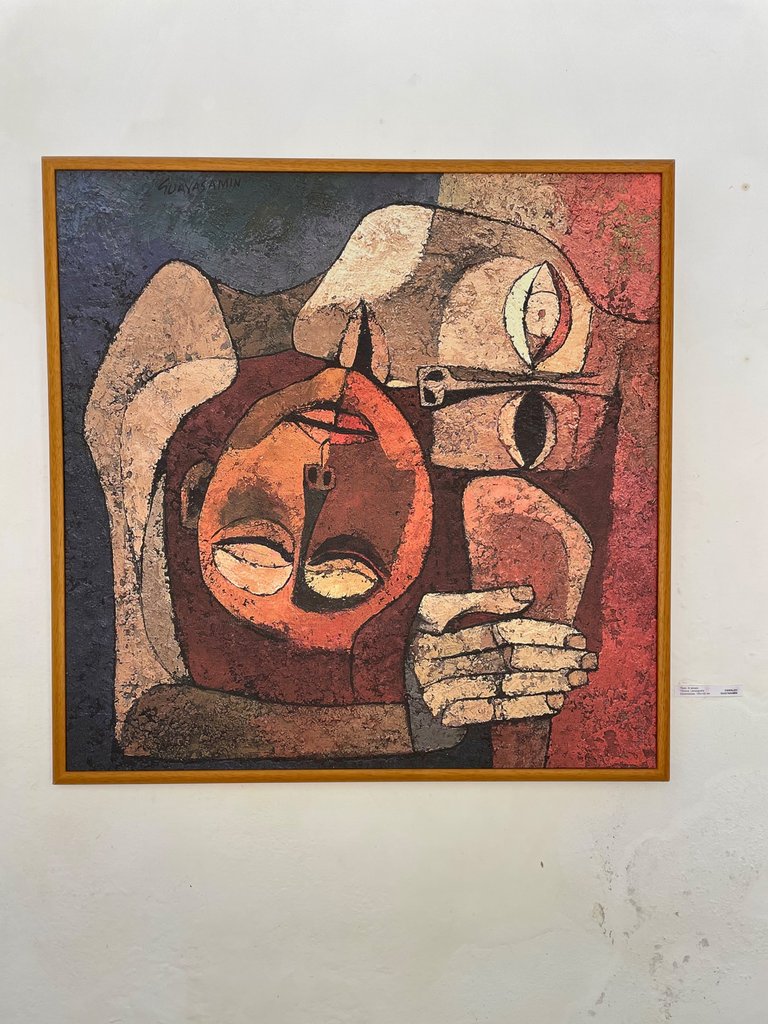
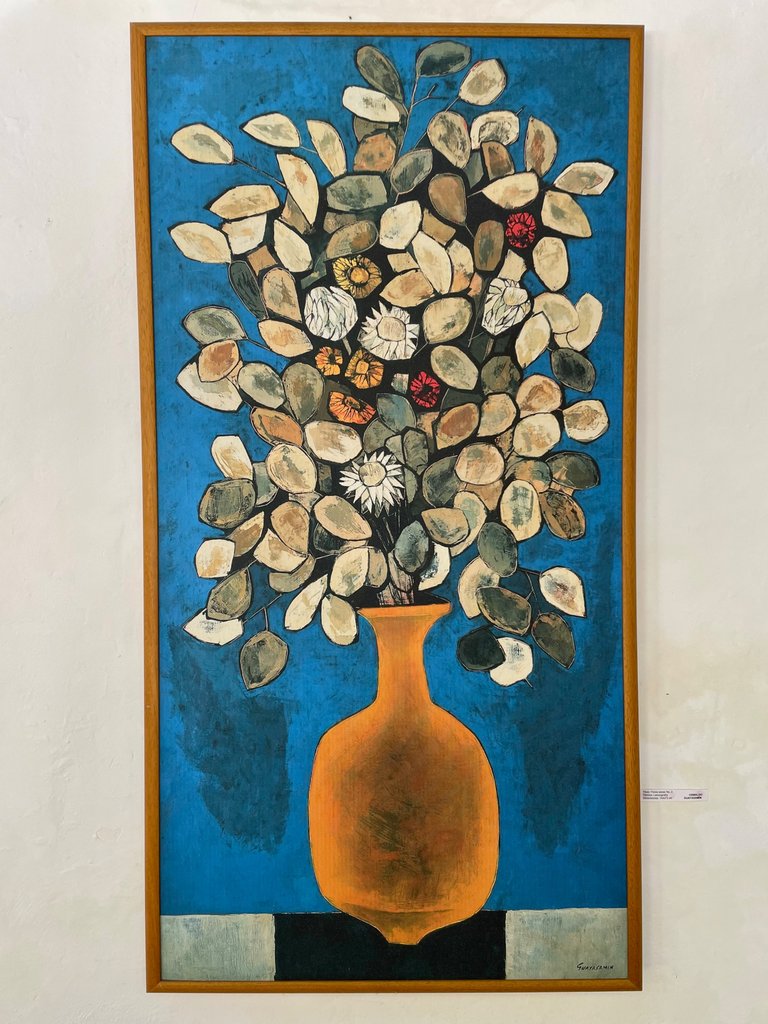

On the upper floor of the house there is a room with temporary exhibitions of Cuban and foreign artists, lectures and video projections on the painter's career.
I was also able to take several photographs of precious showcases with coins, banknotes and art from his country.
I was also able to take several photographs of precious showcases with coins, banknotes and art from his country.
En la planta superior de la casa hay una habitación con exposiciones temporales de artistas cubanos y extranjeros, conferencias y proyecciones de vídeo sobre la trayectoria del pintor.
También pude realizar varias fotografías a preciosas vitrinas con monedas, billetes y arte propio de su país.
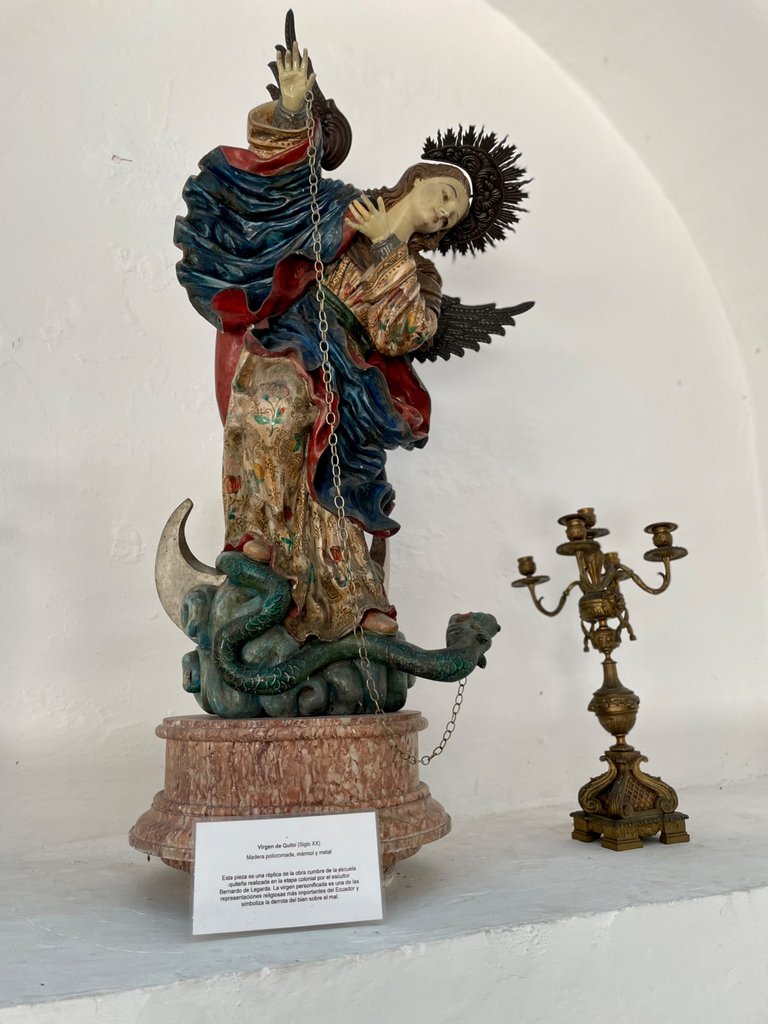
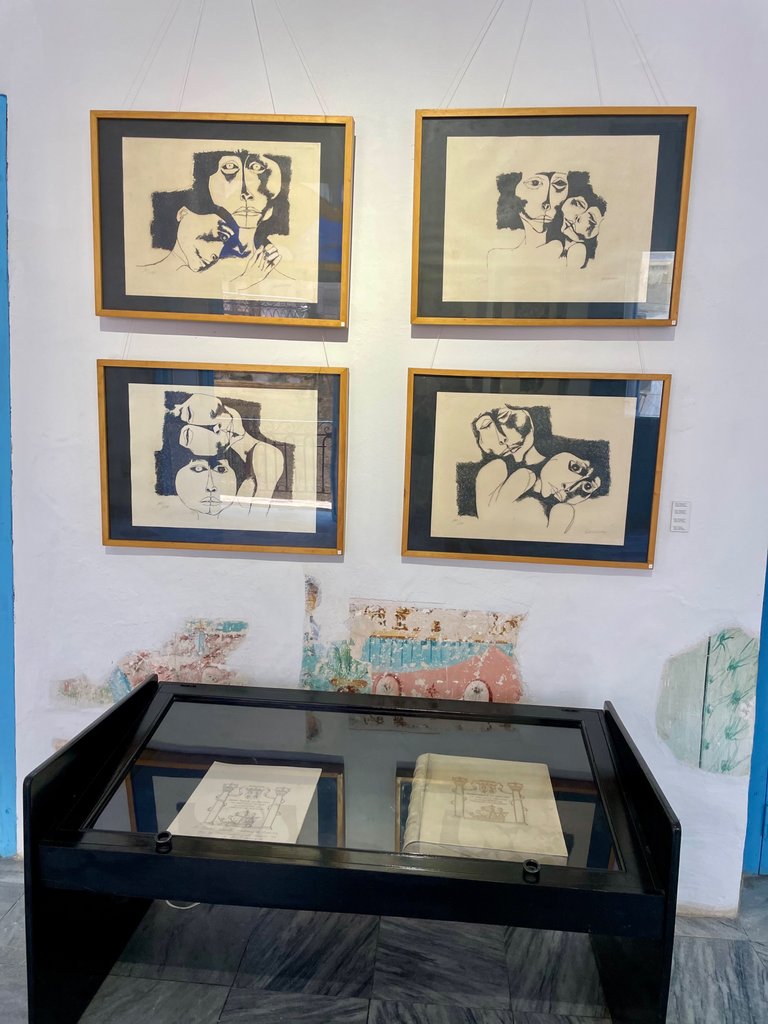
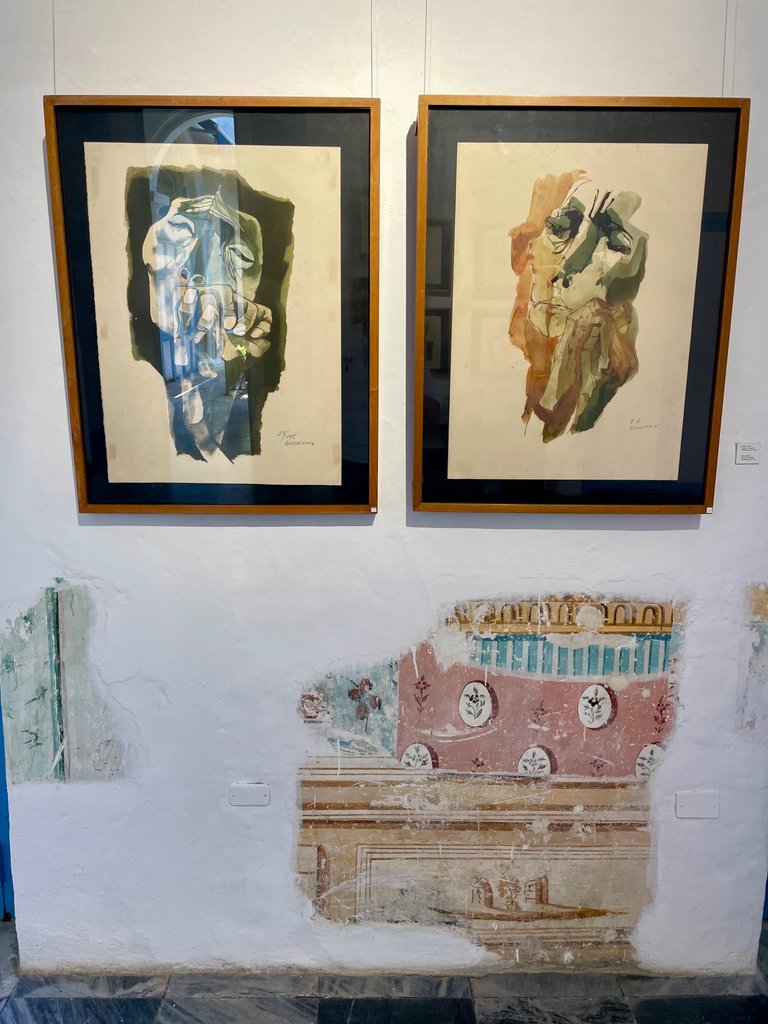

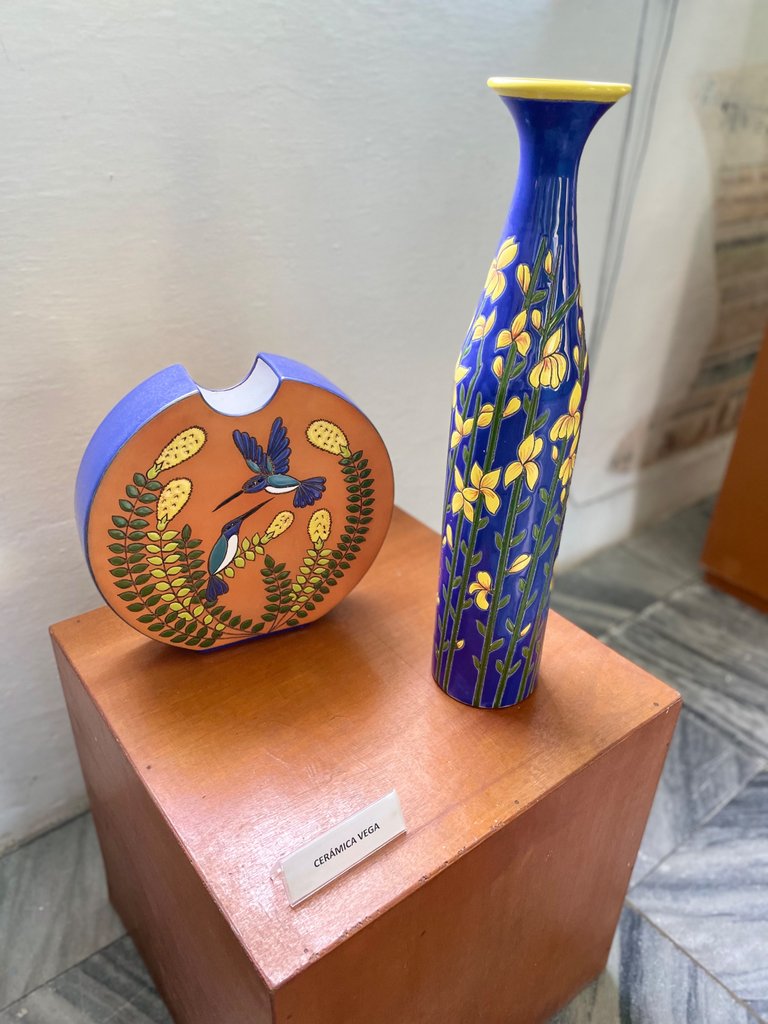
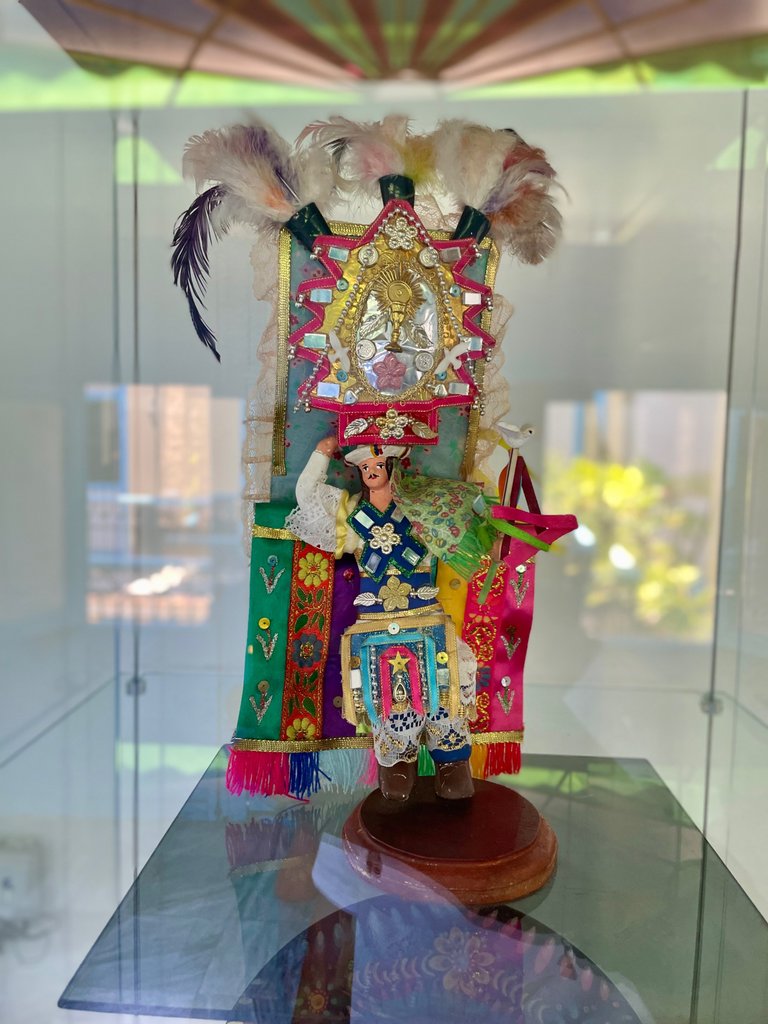
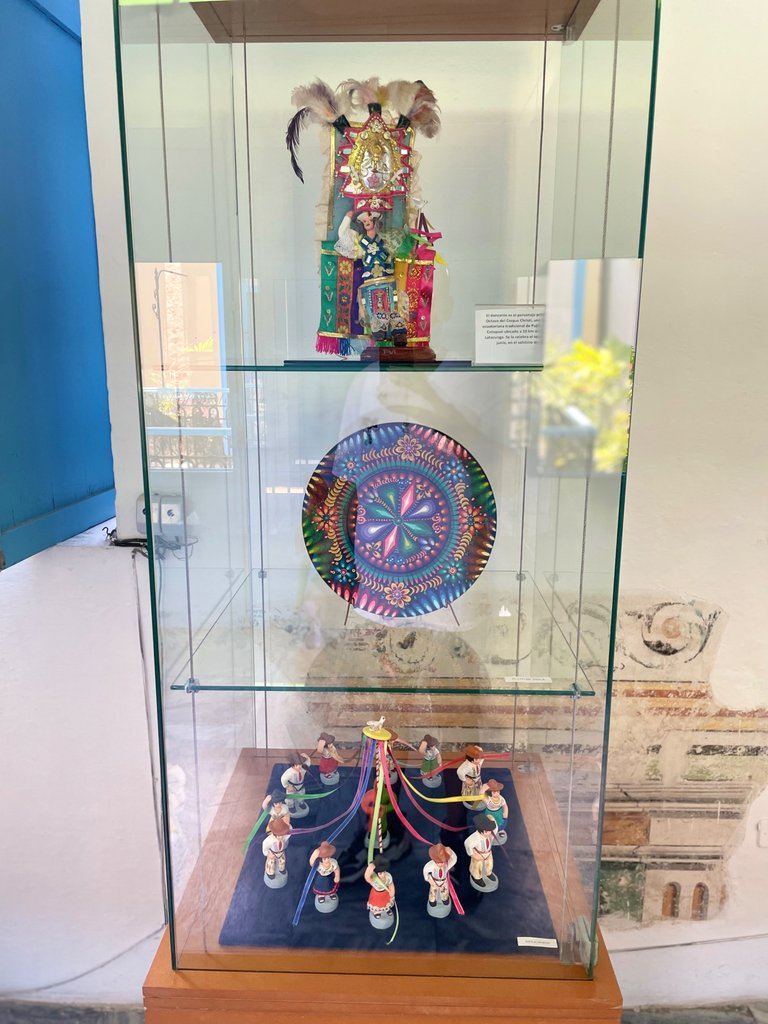
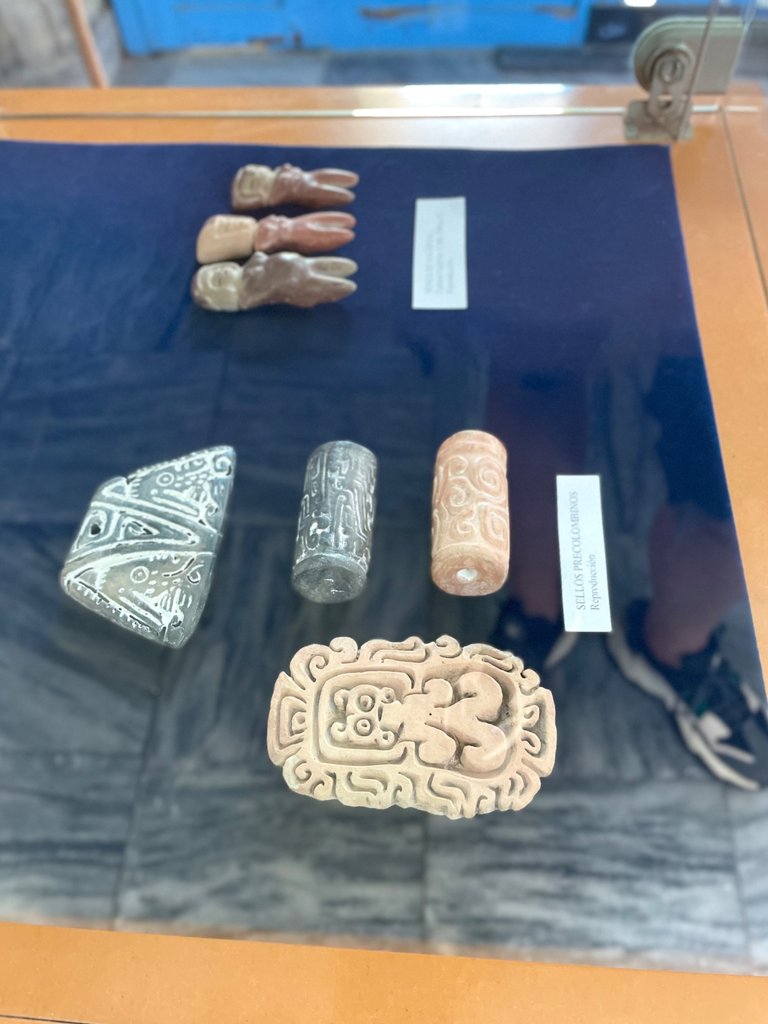
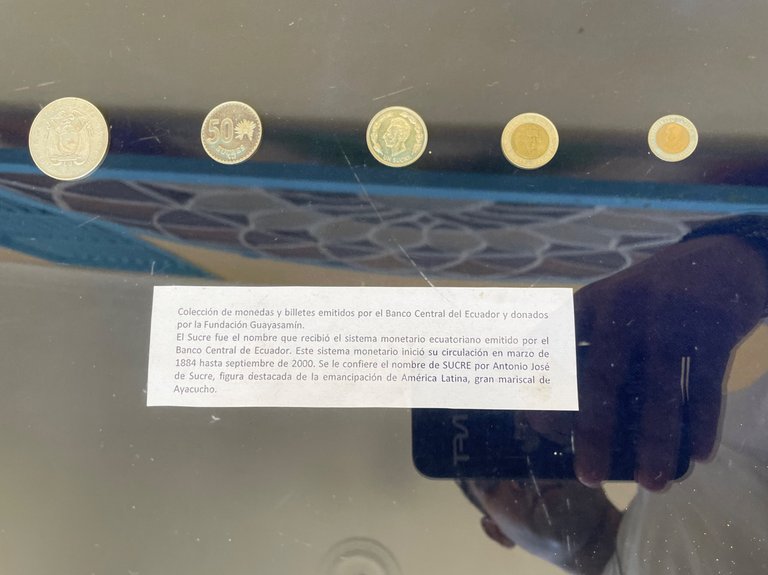
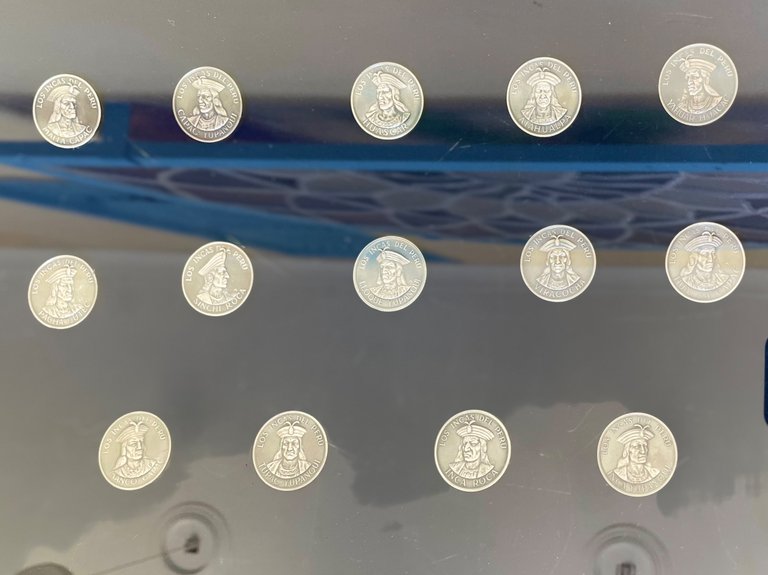
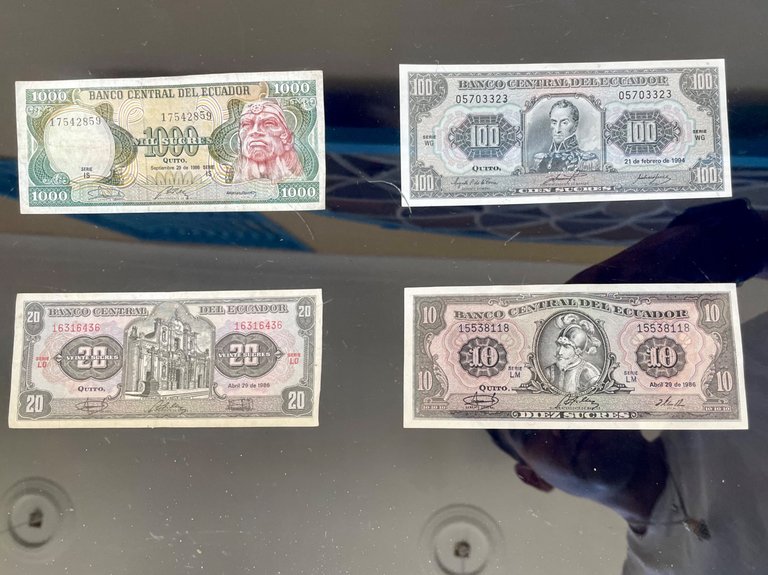
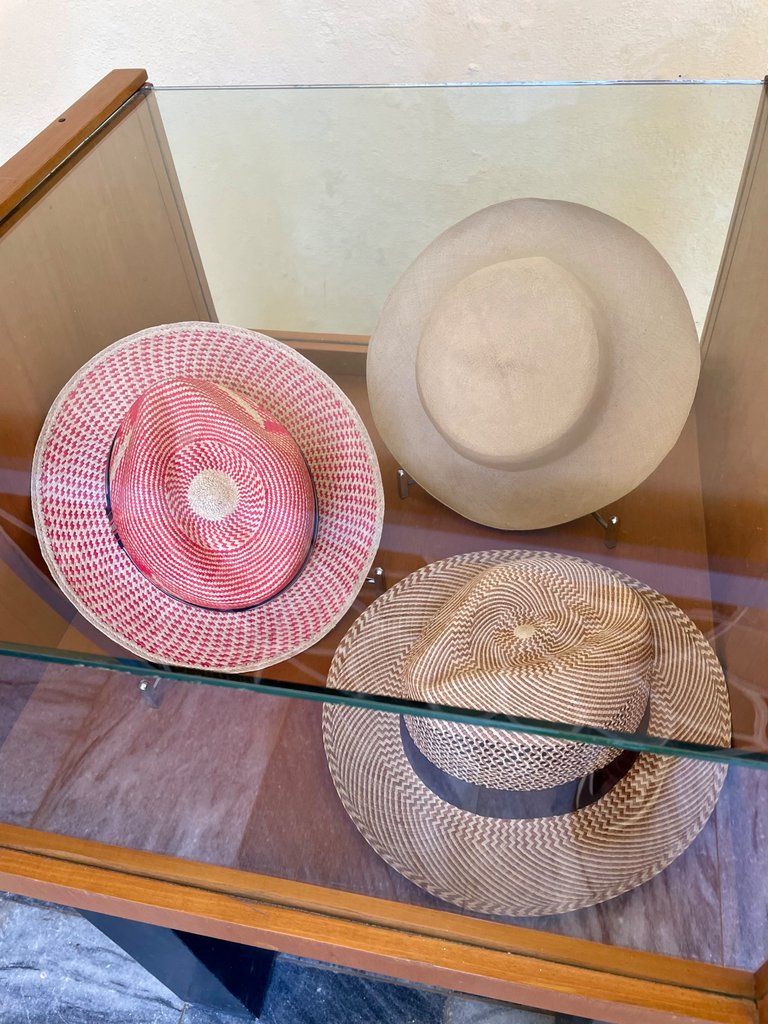
Guayasamín was the only painter for whom the historic leader of the Cuban revolution, Fidel Castro, posed on four occasions. The artist said: "How I express myself best is with shapes and colors", developing several paintings to the president and other personalities of the nation, preserved in the museum.
Guayasamín fue el único pintor para el cual posó en cuatro ocasiones el líder histórico de la revolución cubana Fidel Castro. El cual el artista expreso: "Como mejor me expreso es con formas y colores", desarrollando varios cuadros al presidente y a otras personalidades de la nación, conservadas en el museo.
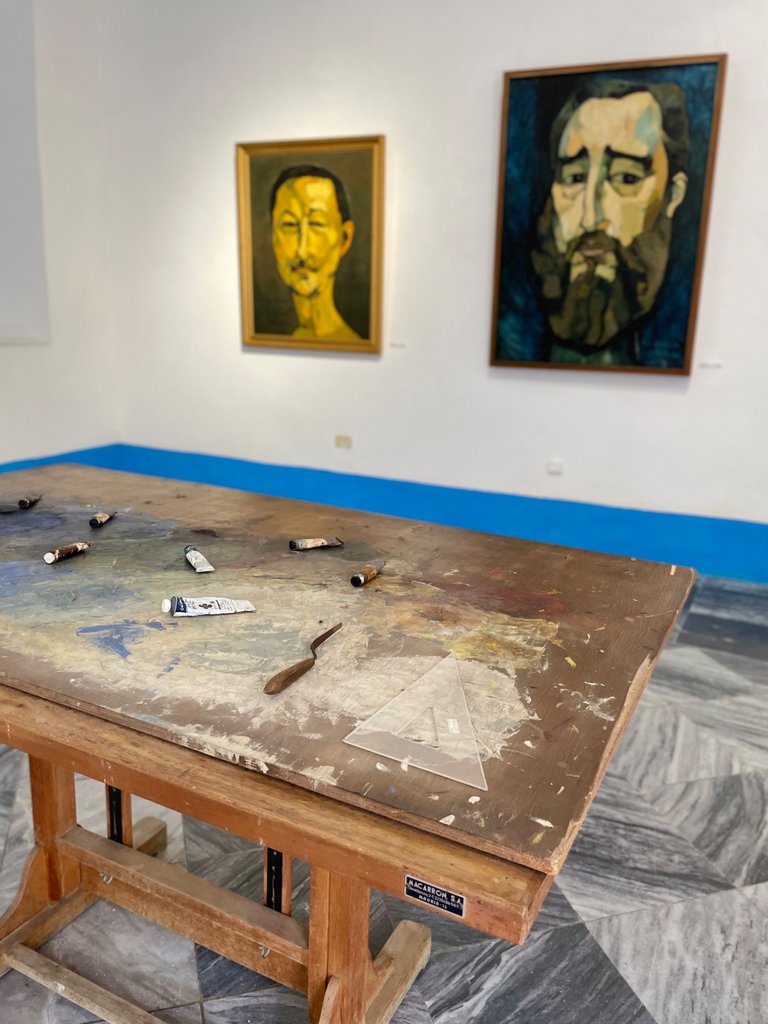

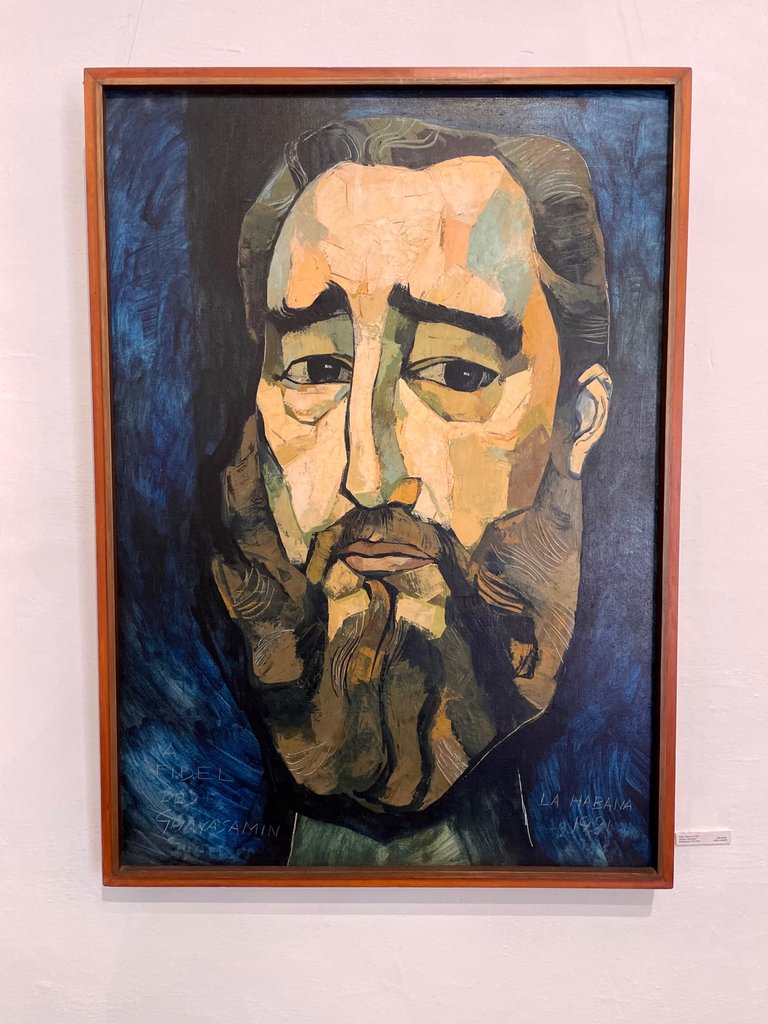
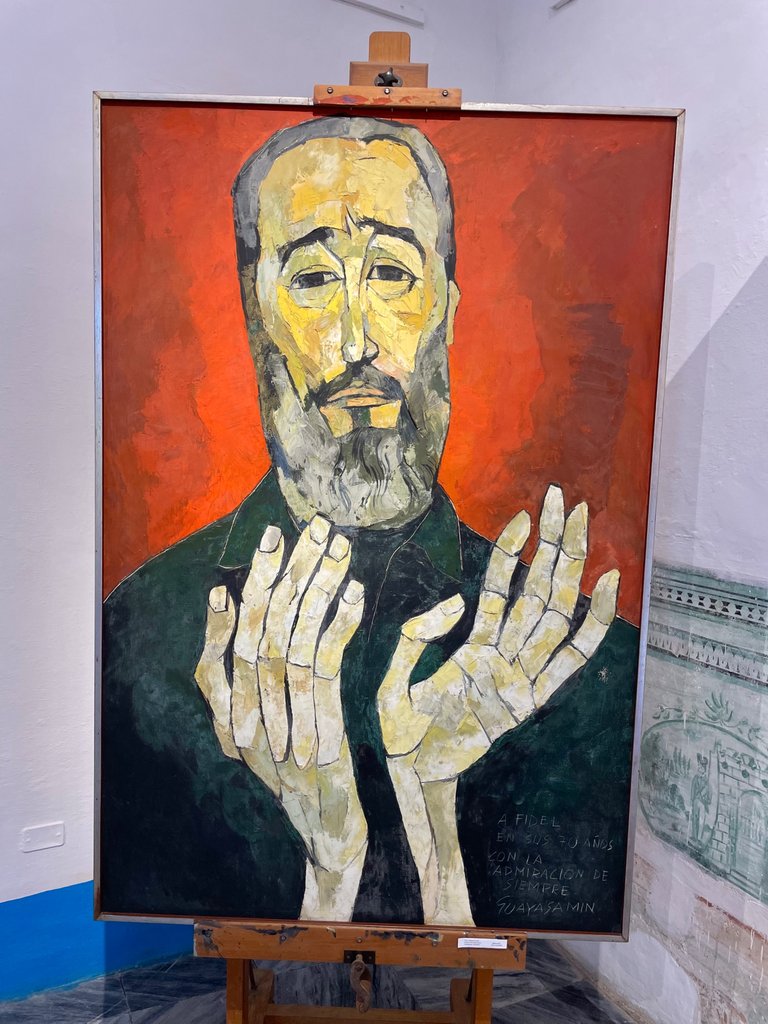
Finally, a selection of pieces from the Ecuadorian Amazon region, delegated by the Ministry of Culture and Heritage of Ecuador in 2014, as well as his dining room, bedroom with personal belongings and bathroom.
Several metal sculptures (roosters and cats), engravings, plates, jewelry and finally one of his most famous works La Niña Azul, with a ceramic sculpture donated by a Cuban artist.
Several metal sculptures (roosters and cats), engravings, plates, jewelry and finally one of his most famous works La Niña Azul, with a ceramic sculpture donated by a Cuban artist.
Ya por último, una selección de piezas de la región amazónica ecuatoriana, delegadas por el Ministerio de Cultura y Patrimonio del Ecuador en 2014, además su comedor, dormitorio con objetos personales y baño.
Varias esculturas en metal ( gallos y gatos ), grabados, láminas, joyas y al final una de sus obras más famosas La Niña Azul, con una escultura en cerámica donada por un artista cubano.
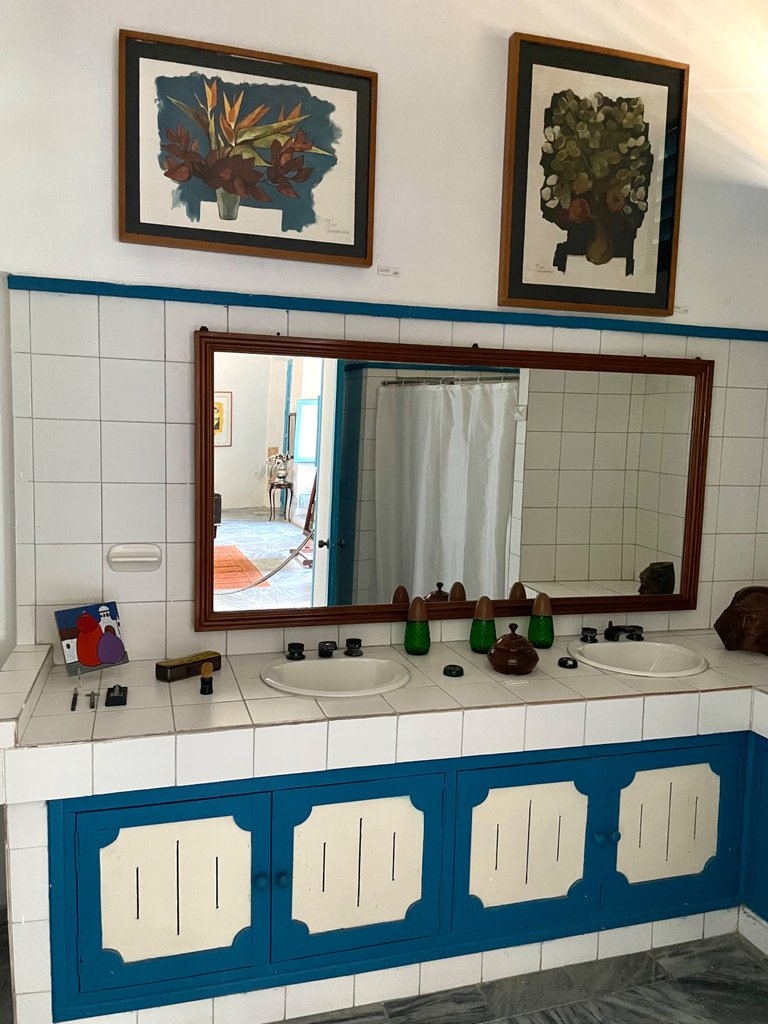
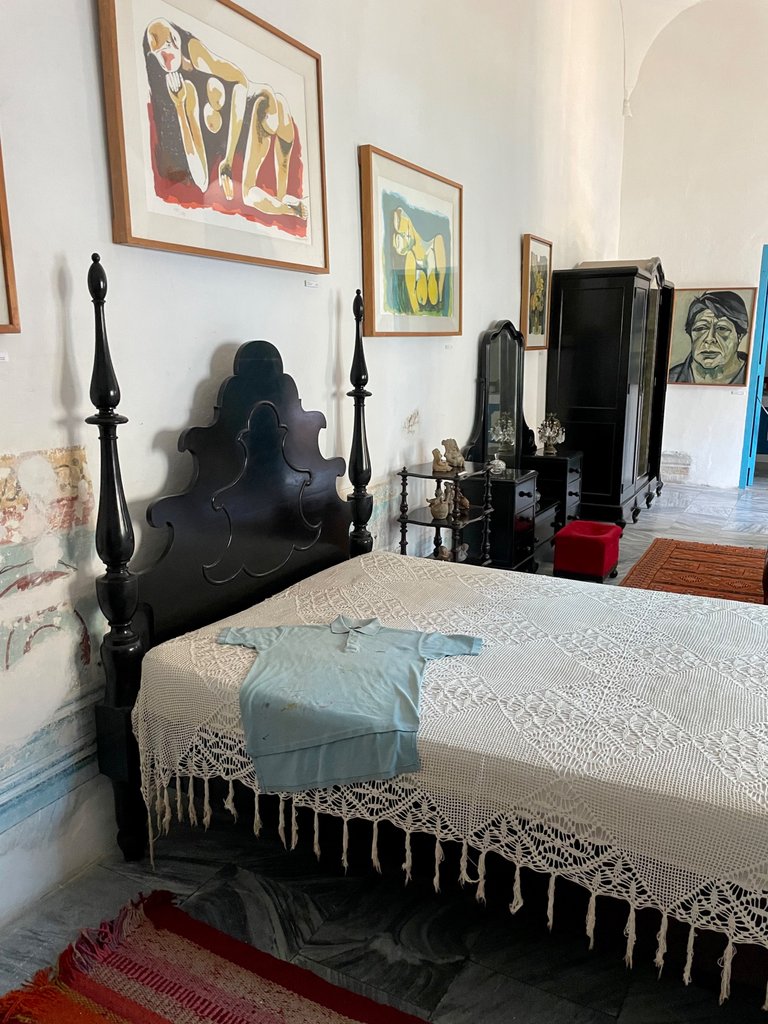
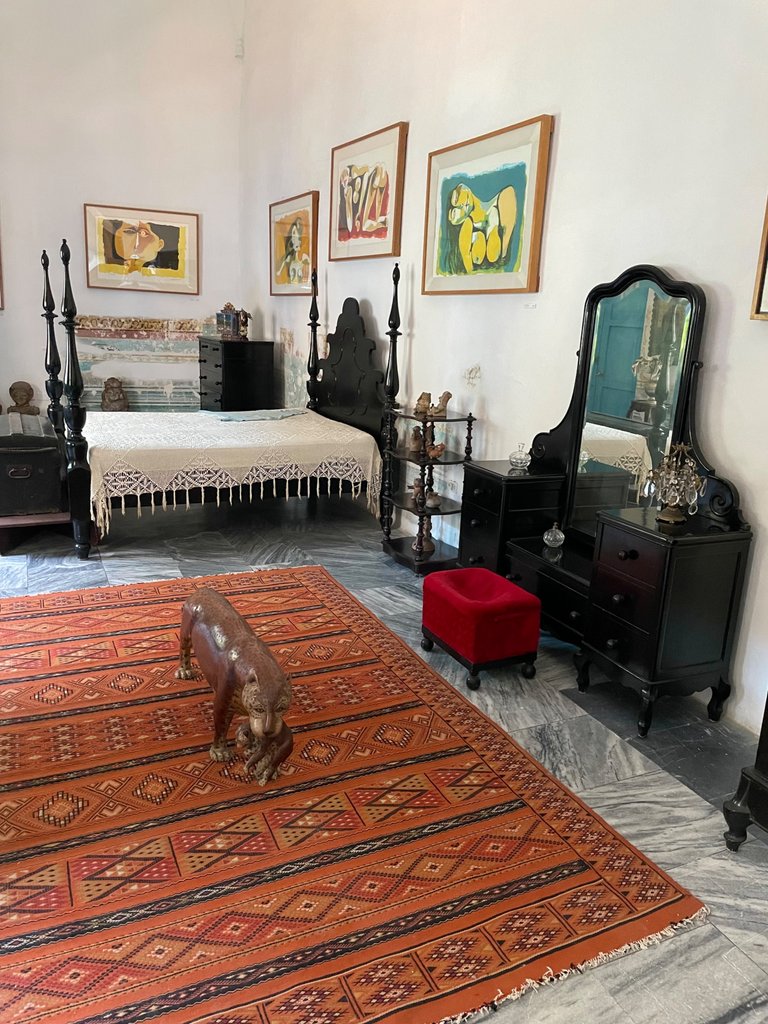
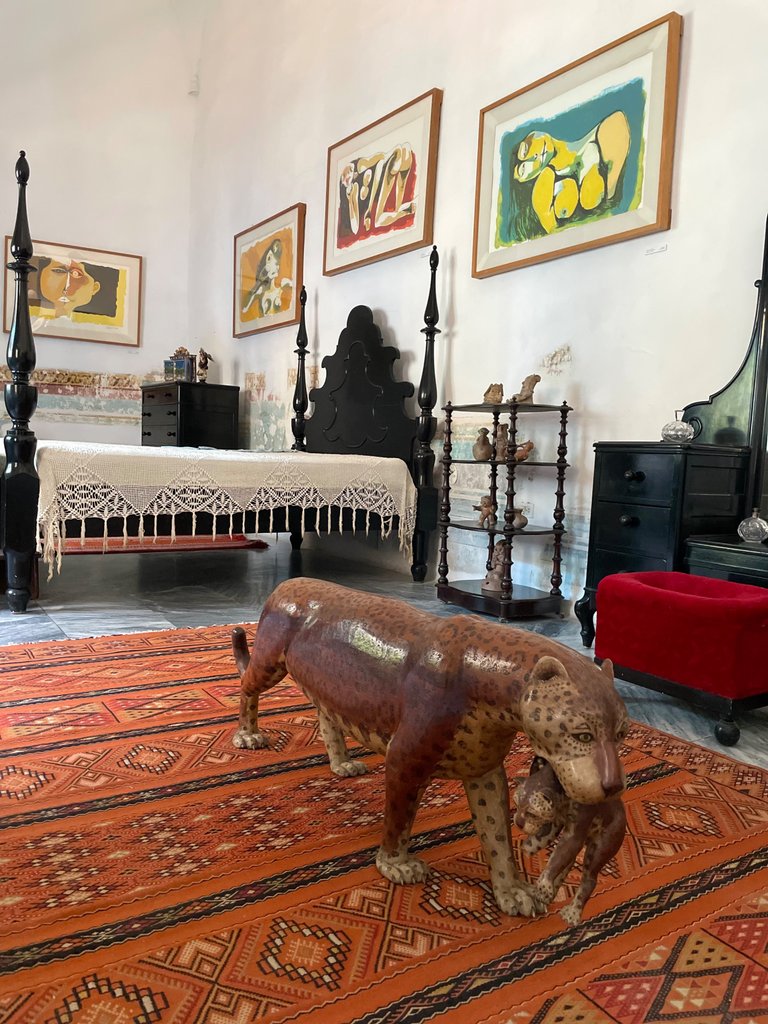
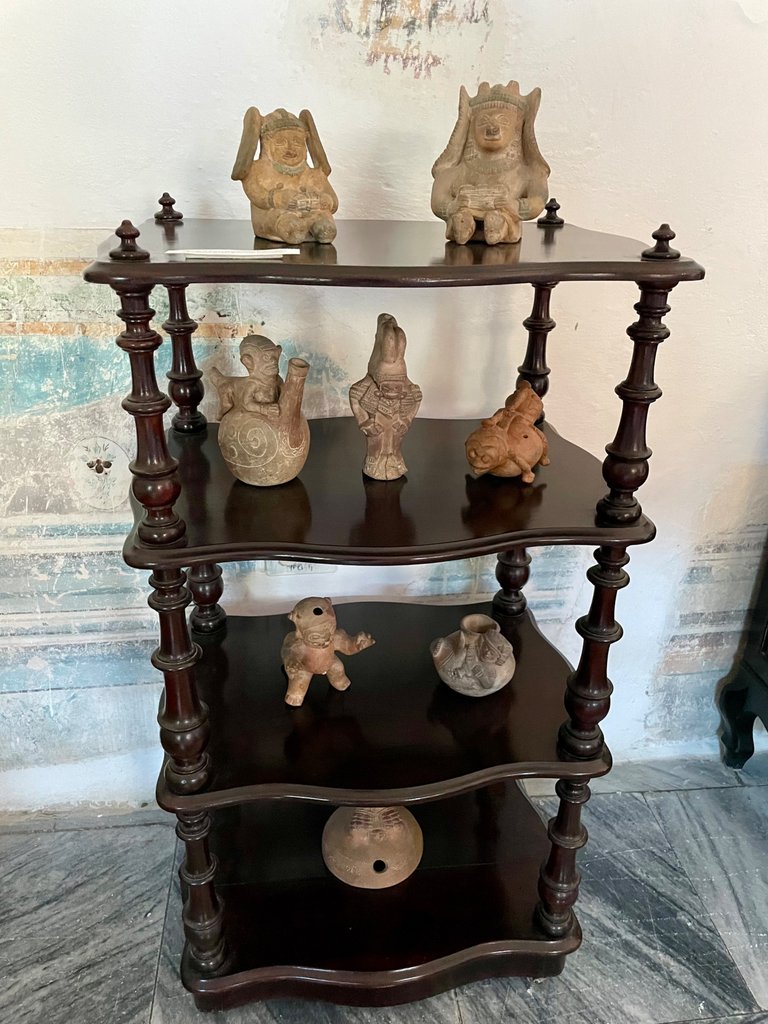
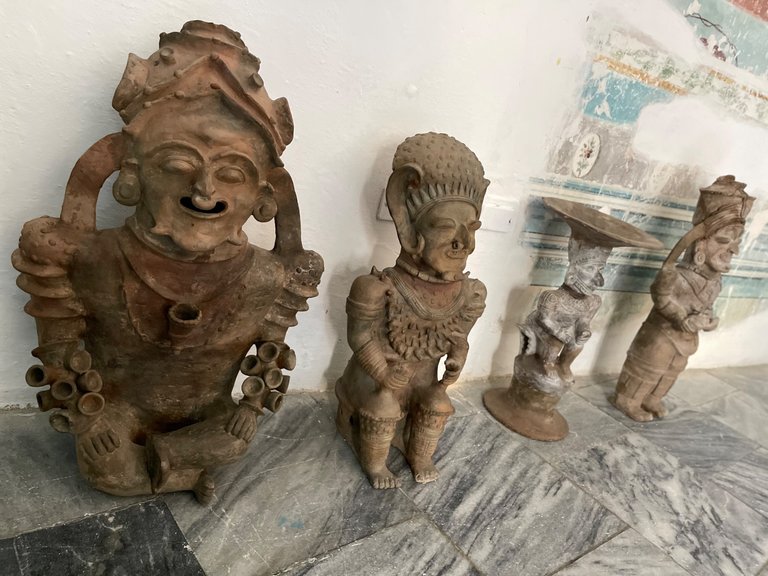
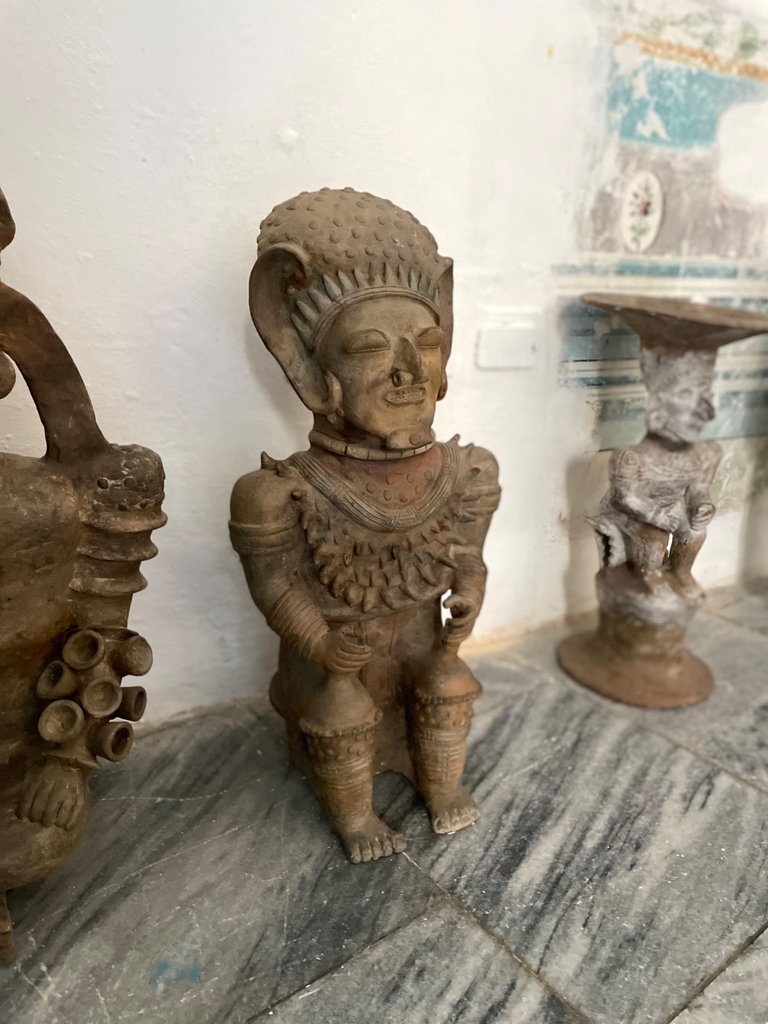
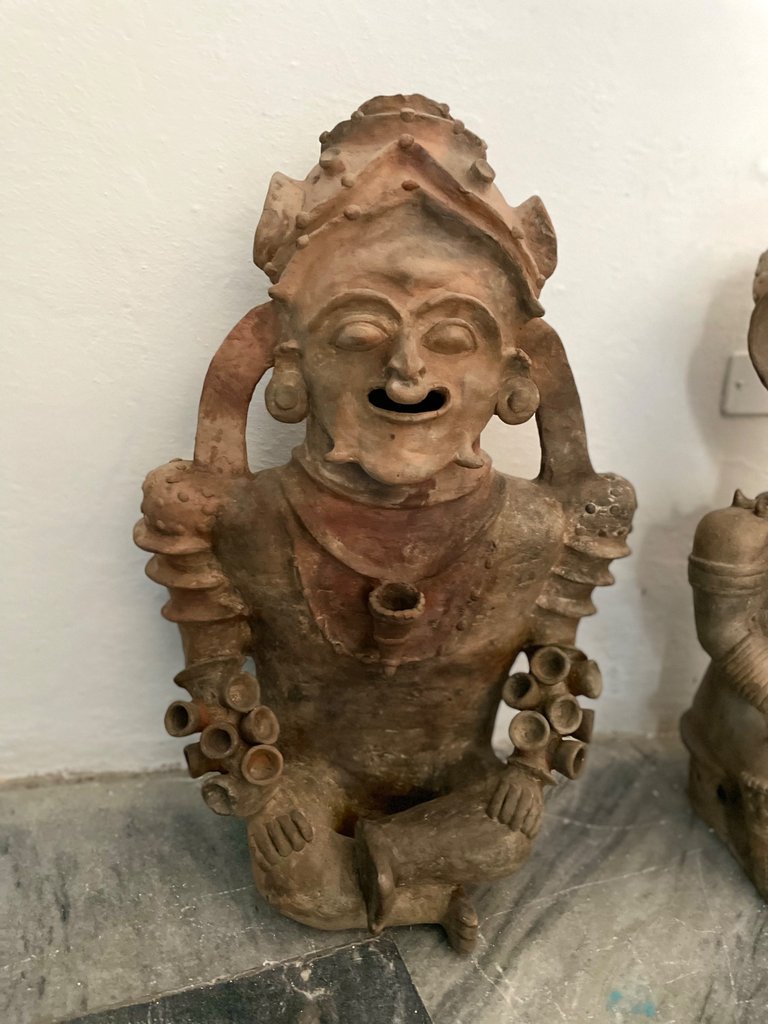
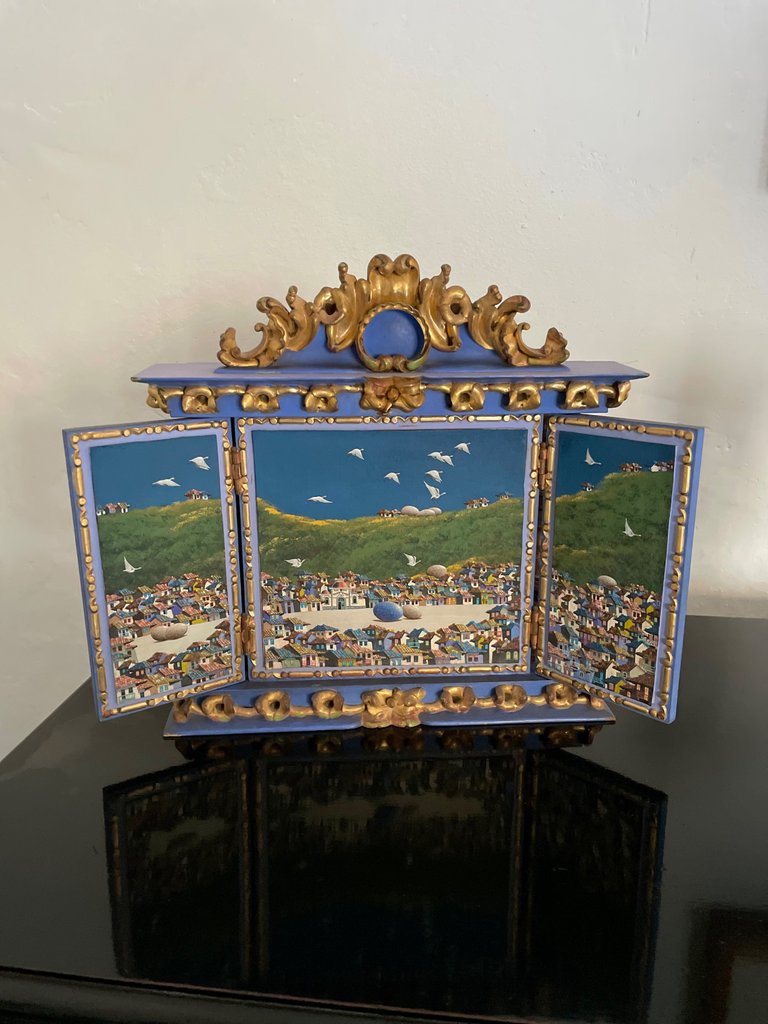
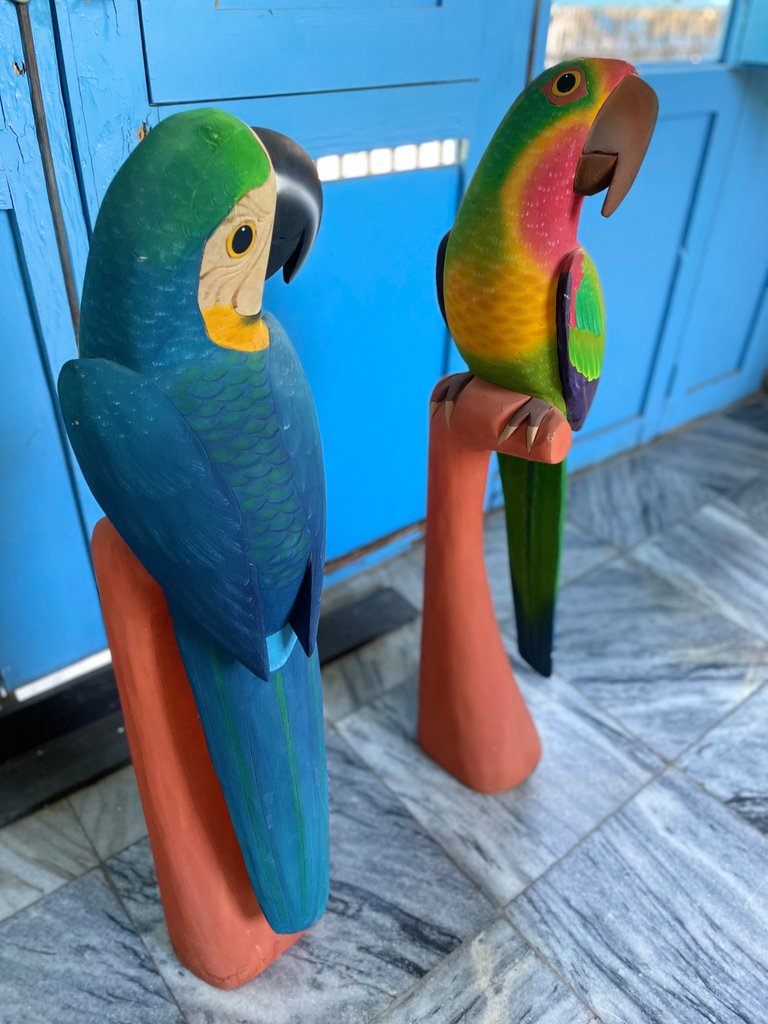
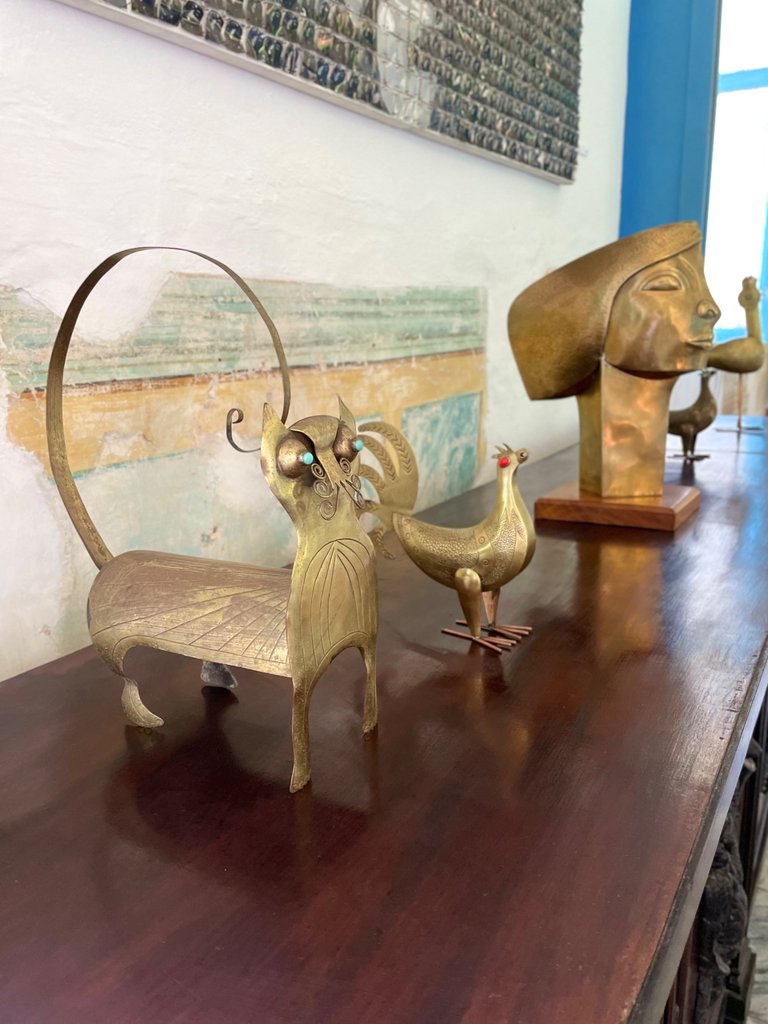

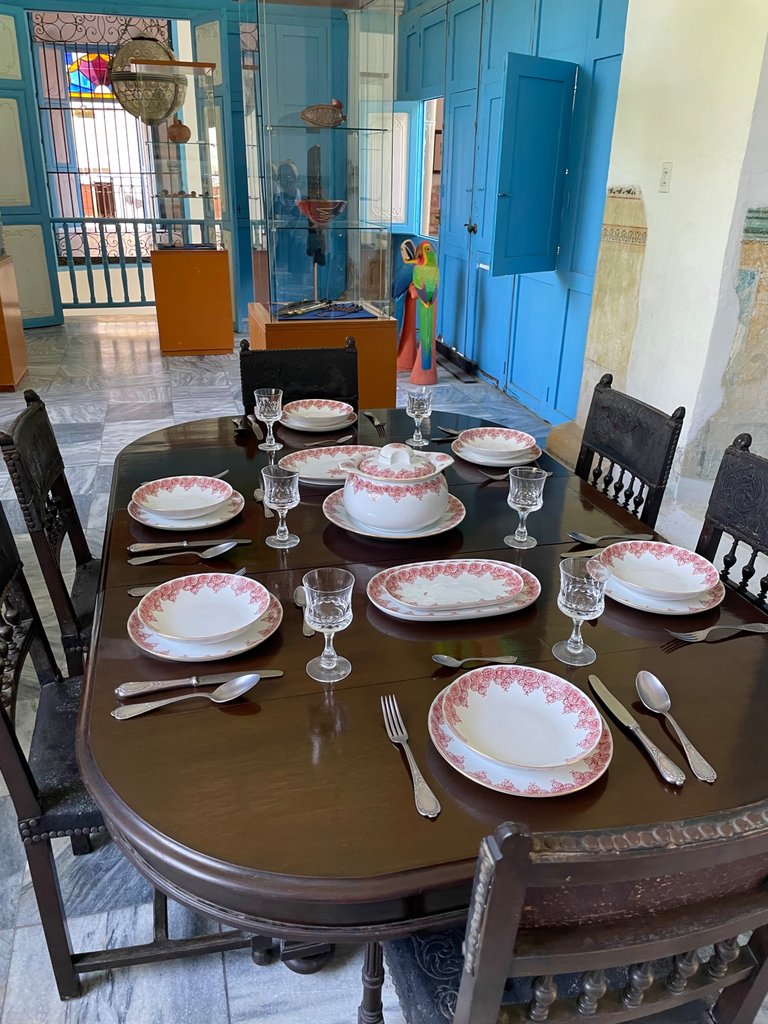
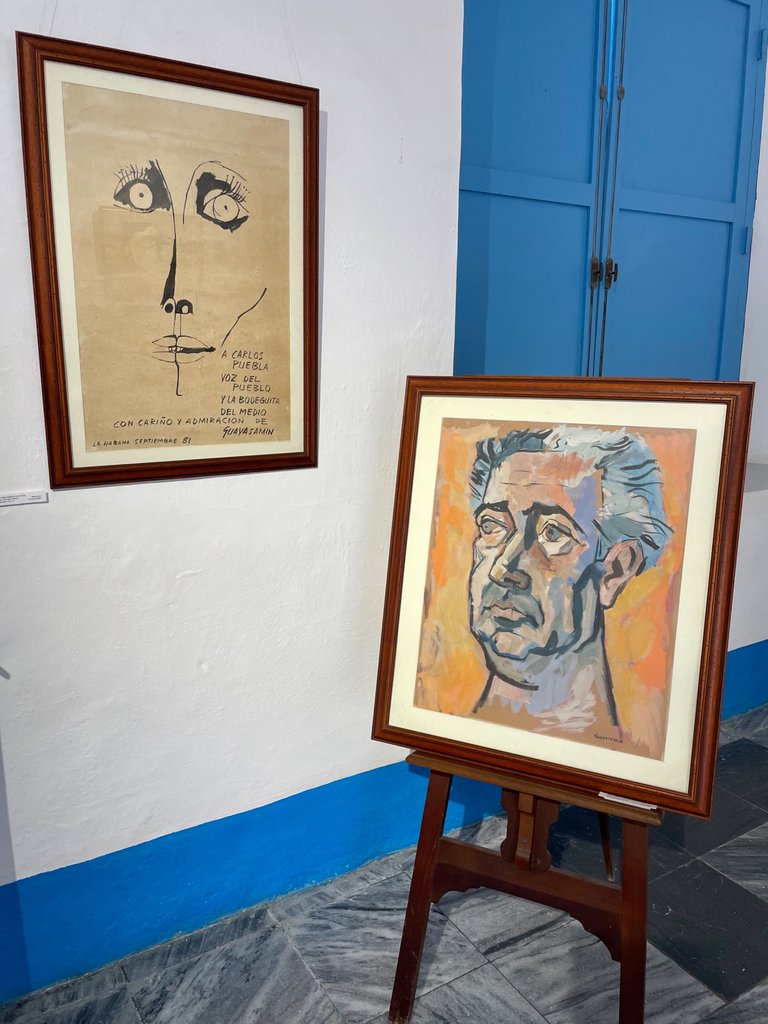
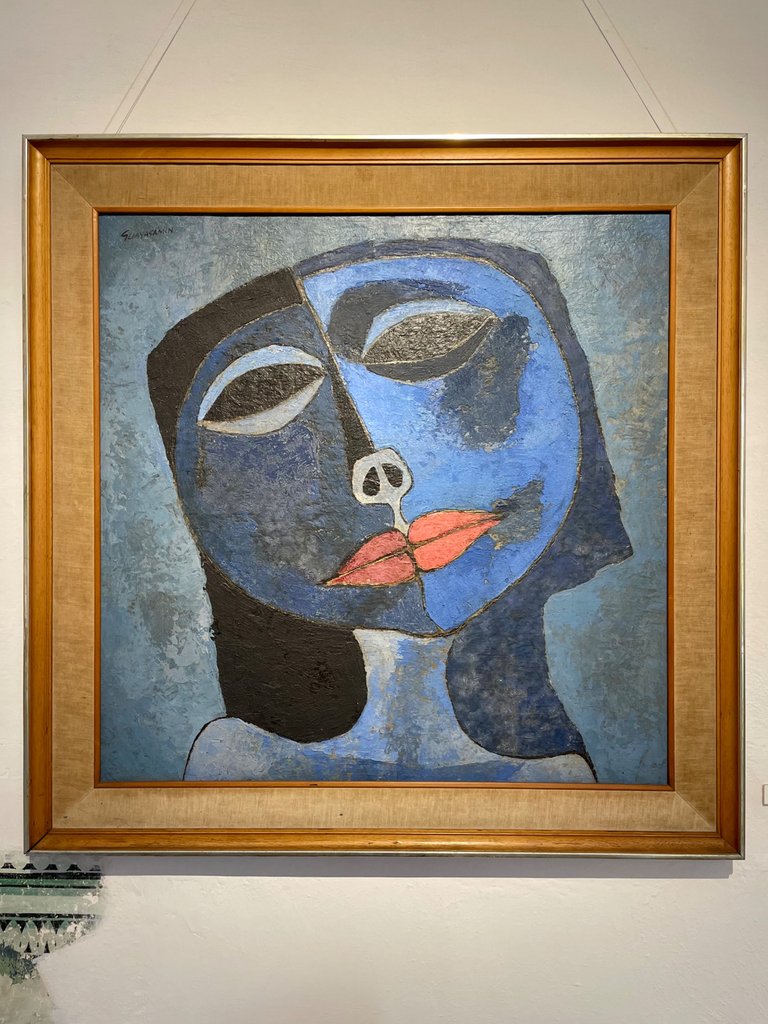
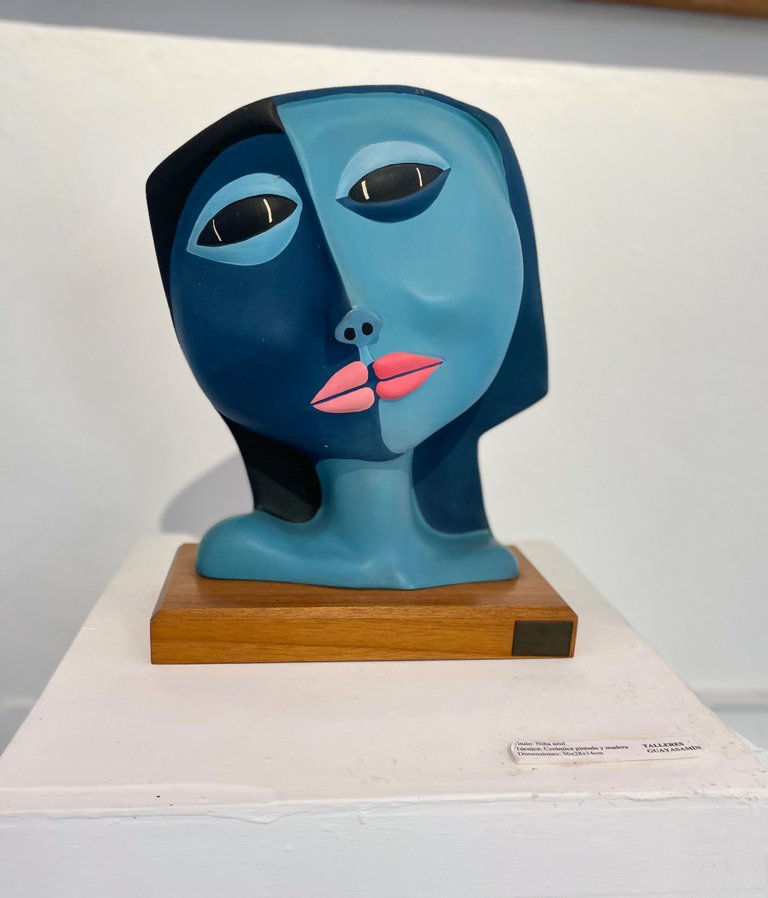
If you have the opportunity, I recommend you to visit this baroque house museum in Havana located at 111 Obrapía Street, designed to preserve the life and work of this great Ecuadorian artist, recognized worldwide as "The painter of Ibero-America".
If you liked it, don't forget to leave your comment and follow me for future publications. I would love to know your opinion and ideas for the next one. Regards
If you liked it, don't forget to leave your comment and follow me for future publications. I would love to know your opinion and ideas for the next one. Regards
Si tienes la oportunidad, te recomiendo visitar esta casa museo barroco en La Habana ubicada en Calle Obrapía n° 111, diseñada para preservar la vida y obra de este gran artista ecuatoriano, reconocido mundialmente como "El pintor de Iberoamérica".
Si te ha gustado, no olvides dejar tu comentario y seguirme para próximas publicaciones. Me encantaría saber tu opinión e ideas para el siguiente. Saludos

0
0
0.000
You can check out this post and your own profile on the map. Be part of the Worldmappin Community and join our Discord Channel to get in touch with other travelers, ask questions or just be updated on our latest features.
Thanks you @worldmappin 😊🙏🏻.
Wow, this is a very spacious place to see sei's work. It's very rare for me to do something like this. How does it feel to be able to see such beautiful works of art. I'm jealous.